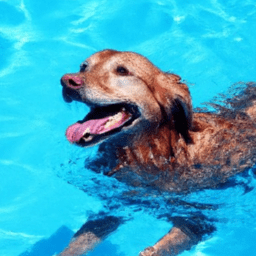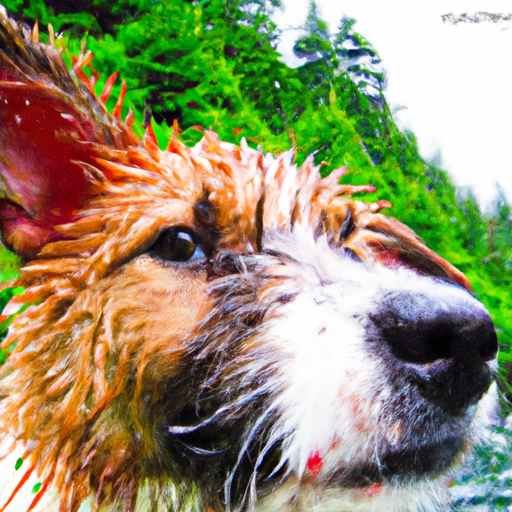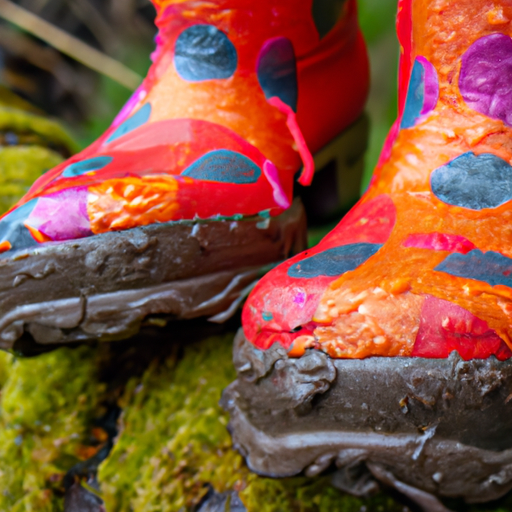Imagine the joy of spending a sunny day at the pool, with your loyal furry friend by your side, splashing and having the time of your lives. Welcome to the exhilarating world of swimming with your dog! Dive into this article for an exciting adventure filled with bonding, exercise, and pure happiness.
Benefits of Swimming for Dogs
Swimming is not only a fun activity, but it also offers numerous benefits for our furry friends. Let's dive into the benefits of swimming for dogs.
Improves cardiovascular health
Swimming is a fantastic way to boost your dog's cardiovascular fitness. The water provides resistance, which helps strengthen their heart muscles and improves blood circulation. Just like humans, dogs can benefit from this low-impact exercise that gets their heart pumping and keeps them in good physical shape.
Strengthens muscles
Swimming is a full-body workout that engages all of your dog's muscles. The resistance of the water helps to build strength in their limbs, back, and core. It is especially beneficial for dogs recovering from surgery or injury, as it allows them to exercise without putting excessive stress on their joints. Regular swimming sessions can help your dog develop and maintain strong, healthy muscles.
Provides low-impact exercise
For dogs with joint issues or arthritis, high-impact exercises like running or jumping can be painful. Swimming, on the other hand, is a low-impact exercise that puts minimal stress on their joints. The buoyancy of the water supports their weight, reducing the strain on their bones and allowing them to exercise more comfortably. It's a wonderful option for senior dogs or those with mobility issues.
Helps with weight management
If your furry friend is carrying a few extra pounds, swimming can be a great way to help them shed the excess weight. The water resistance provides a challenging workout that burns calories and builds lean muscle mass. Swimming is an effective way to keep your dog fit, trim, and at a healthy weight. Plus, it's a great way for them to cool off during hot summer days!
Safety Precautions
While swimming is a fun and beneficial activity, it's crucial to ensure your dog's safety. Here are some safety precautions to keep in mind:
Choose a suitable swimming location
When selecting a swimming location for your dog, consider factors such as water depth, current strength, and the presence of any hazards. Opt for calm waters like lakes or pools, avoiding areas with strong undertows or dangerous wildlife. Always prioritize your dog's safety when choosing a swimming spot.
Ensure your dog can swim
Before taking your dog for a swim, it's important to determine their swimming ability. Not all dogs are natural swimmers, and some may require additional training or assistance. Start in shallow water and observe their comfort level and swimming skills. If your dog is hesitant or struggling, consider investing in a canine life jacket for added safety.
Use a life jacket
Even if your dog is a confident swimmer, using a life jacket is a wise precaution. It provides additional buoyancy, ensuring your dog stays afloat even if they become tired or encounter unexpected challenges. Life jackets also have handles that make it easier to assist your dog in and out of the water.
Watch out for currents
When swimming with your dog in natural bodies of water, be aware of currents. Strong currents can be dangerous and exhausting for both you and your furry companion. Keep an eye out for any signs of strong underwater currents or rip tides. It is always better to be safe than sorry, so avoid swimming in areas with unpredictable currents.
Stay close to your dog
While your dog may be a strong swimmer, it's important to stay close and keep a watchful eye on them. Accidents can happen, and it's our responsibility to ensure their safety. Pay attention to your dog's energy level, and if they show signs of exhaustion or distress, it's time to end the swimming session and provide them with a rest.
Preparing for a Swim
Before diving into the water, there are a few steps you can take to make sure your dog is ready for a successful swimming experience.
Introduce your dog to water gradually
Not all dogs are born water lovers, so it's crucial to introduce them to water gradually. Start with shallow wading pools or calm lakes and let them explore at their own pace. Offer plenty of praise and treats to create positive associations with water. With patience and positive reinforcement, you can help your dog overcome any fears or anxieties they may have about swimming.
Teach basic commands
Before swimming, it's essential to teach your dog basic commands that will help keep them safe in the water. Commands like “come,” “stay,” and “leave it” are invaluable tools that can prevent accidents or keep your dog out of harm's way. With consistent training, your dog will learn to respond to these commands, even when they're excited or distracted by the water.
Gather necessary supplies
When preparing for a swim, make sure you have all the necessary supplies. A canine life jacket is a must-have, especially for dogs who are still learning to swim or are prone to fatigue. Additionally, bring along a leash, collapsible water bowl, and any other essentials like sunscreen for dogs with light-colored or thin coats. Being well-prepared ensures a safe and enjoyable swimming experience for both you and your dog.
Properly groom your dog before swimming
Before hitting the water, make sure your dog is properly groomed. Trim their nails to prevent scratching and provide them with better traction in the water. Additionally, consider giving them a good brushing to remove any loose hair or mats that can become tangled when wet. Keeping your dog well-groomed not only promotes good hygiene but also makes swimming more comfortable for them.
Swimming Techniques
Once you and your dog are ready to dive in, it's important to use proper swimming techniques to ensure their safety and maximize the benefits of swimming.
Supporting your dog's weight
Some dogs may have difficulty swimming for an extended period, especially smaller breeds or those with less muscle mass. To assist them, gently support their weight by placing one hand under their chest or belly. This support helps them stay afloat and allows them to swim more comfortably, building their confidence in the water.
Encouraging proper swimming form
Just like humans, dogs have different swimming styles. Some dogs may paddle all four legs, while others may use only their front or back legs. Whichever style your dog prefers, encourage proper swimming form by gently guiding their movements. Prevent excessive splashing or thrashing, as it can tire them more quickly. Aim for smooth and controlled movements in the water.
Monitoring your dog's stamina
While swimming is a great form of exercise, it's important not to overexert your dog. Pay close attention to their energy levels and monitor for signs of fatigue, such as heavy panting or slowing down in the water. If your dog becomes tired, take frequent breaks to provide them with rest and time to recover. Over time, your dog's stamina will improve, allowing them to swim for longer durations comfortably.
Taking breaks
Swimming is a physically demanding activity, so it's essential to take regular breaks to prevent exhaustion. Get out of the water and allow your dog to rest in a shaded area. Offer them fresh water to keep them hydrated during their swim. Keep in mind that swimming can also be an intense mental activity for dogs, so breaks provide much-needed physical and mental rest.
Fun Water Activities for Dogs
Swimming doesn't have to be all about laps and exercise. It can also be a fun and enjoyable experience for both you and your furry friend. Here are some water activities that will make your swimming sessions even more exciting:
Retrieve games
Most dogs love to chase and fetch, so make swimming sessions more interactive by playing retrieve games. Toss a floating toy or ball into the water, and watch your dog paddle enthusiastically to bring it back to you. This game not only provides mental stimulation but also increases their swimming endurance.
Dock jumping
If your dog loves a good challenge and has mastered swimming, dock jumping is an exhilarating activity to try. Find a dock or platform that extends into the water and encourage your dog to jump off and retrieve a toy. Dock jumping can be a competitive sport or simply a thrilling activity to enjoy together.
Toy races
Challenge your dog's speed and agility by setting up a toy race in the water. Place multiple toys or floating objects along a designated course and encourage your dog to retrieve each one. This activity provides mental stimulation, as they have to locate and retrieve toys strategically, as well as physical exercise as they swim around to complete the course.
Water fetch
A classic game of fetch can be taken to the next level in the water. Toss a toy or ball into the water and encourage your dog to retrieve it. Swimming back and forth to fetch their favorite toys will not only give them a good workout but also provide mental stimulation and reinforce their swimming skills.
Paddleboarding with your dog
If you're a fan of paddleboarding, why not bring your dog along for the adventure? Many dogs enjoy riding along on a paddleboard, experiencing the water from a different perspective. However, it's important to ensure your dog is comfortable with the paddleboard and wears a canine life jacket for added safety. Paddleboarding together can be a wonderful bonding experience for you and your furry companion.
Water Safety Training
To further ensure your dog's safety around water, it's essential to provide them with water safety training. Here are some important skills you can teach your dog:
Teaching your dog to exit the pool
If you have a backyard pool or frequently visit pools with your dog, it's crucial to teach them how to safely exit the water. Show your dog where the pool steps or ladder are located, and encourage them to use them to exit the pool independently. This skill is particularly important in case they accidentally fall into a pool or need to get out of the water quickly.
Training your dog to swim to safety
In the event of an emergency, it's important for your dog to know how to swim to safety. Start by teaching them the command “swim to safety” while they are in the water. Guide them to a designated area, such as the shallow end of a pool or the shoreline of a lake, where they can safely exit. This skill can save their life if they find themselves in a dangerous or unfamiliar body of water.
Encouraging water confidence
Some dogs may naturally be anxious or fearful around water. To help them overcome their fears and become more confident, gradually expose them to water in a controlled and positive environment. Start with shallow pools, and slowly increase the water depth as they become more comfortable. Offer plenty of praise, treats, and reassurance to build their trust and confidence around water.
Practicing water rescue skills
In addition to teaching your dog basic swimming skills, consider training them in water rescue techniques. It's crucial for your dog to know how to safely approach a person in distress and assist in bringing them to safety. Consult with a professional dog trainer or enroll in a water rescue training program to ensure both you and your dog are well-prepared in case of emergencies.
Swimming with Senior Dogs
Senior dogs can also benefit from swimming, but it's important to take some additional precautions and considerations due to their age and potential health conditions.
Consulting with your vet
Before engaging in swimming activities with your senior dog, it's vital to consult with your veterinarian. They will assess your dog's overall health and determine if swimming is appropriate for them. Your vet may also provide specific recommendations based on your dog's age, breed, and any underlying health concerns.
Choosing calm and warm waters
Senior dogs may have more difficulty regulating their body temperature, so it's important to choose swimming locations with calm and warm waters. Avoid exposing them to cold or rough waters that can cause discomfort or stress. Opt for swimming sessions during the warmer parts of the day to minimize the risk of your dog getting chilled.
Providing extra support
Senior dogs may experience joint stiffness or mobility issues, so providing extra support during swimming sessions is crucial. Consider using a canine life jacket with a handle to assist your dog in and out of the water. Gentle support under their chest or belly can also alleviate pressure on their joints and make swimming more comfortable for them.
Monitoring for fatigue
While swimming is a low-impact exercise, senior dogs may tire more quickly than their younger counterparts. Monitor your dog closely for signs of fatigue, such as excessive panting, slowing down, or difficulty staying afloat. Take regular breaks and provide them with ample rest and hydration. Remember, swimming should be an enjoyable activity for your senior dog, so adjust the duration and intensity of the swim to suit their individual needs.
Swimming with Puppies
Introducing puppies to swimming at a young age can help them become comfortable and confident around water. However, special considerations must be taken into account when swimming with puppies.
Gradual introduction to water
Just like with adult dogs, it's important to introduce puppies to water gradually. Start by allowing them to explore shallow pools or calm lakes, and observe their reaction. Be patient and provide plenty of positive reinforcement. Make sure the water is warm and inviting to ensure a pleasant first experience.
Positive reinforcement
Puppies respond well to positive reinforcement, so use treats, praise, and play to encourage them to embrace swimming. Offer treats for stepping into the water, swimming short distances, or even just confidently sitting or playing near the water. Create positive associations with swimming by making it a fun and rewarding experience for your puppy.
Supervised playtime
When swimming with a puppy, always supervise them closely. Puppies are full of energy and curiosity, so it's essential to ensure their safety at all times. Keep them within your reach and avoid leaving them unattended in or near the water. Remember that even puppies can tire quickly, so provide plenty of rest breaks throughout the swimming session.
Using flotation devices
Puppies may not have fully developed swimming skills yet, so using flotation devices can provide an added level of safety and confidence. Canine life jackets designed specifically for puppies can ensure they stay afloat and prevent accidents in the water. As they become more comfortable and confident in their swimming abilities, you can gradually reduce their reliance on flotation devices.
Benefits of Professional Swim Lessons
While swimming with your dog can be a rewarding experience, professional swim lessons offer additional advantages and opportunities for both of you.
Learn proper swimming techniques
Enrolling in professional swim lessons with your dog allows you to learn proper swimming techniques from experienced instructors. They can provide guidance on improving your dog's form, breathing techniques, and overall swimming skills. Learning proper techniques enhances your dog's swimming experience and ensures they get the most out of each session.
Boost water safety skills
Professional swim lessons often include water safety training, teaching both you and your dog essential skills to navigate water safely. You can learn how to recognize potential hazards, respond to emergencies, and keep yourselves and others safe in various water environments. Water safety skills are invaluable and can save lives in unexpected situations.
Increased socialization opportunities
Swim lessons provide a unique opportunity for your dog to socialize with other dogs in a controlled and supervised environment. Training classes allow them to interact and play with other dogs, helping them build confidence and develop appropriate socialization skills. It's also a great way for you to connect with fellow dog owners who share a love for swimming.
Access to specialized equipment
Professional swim lessons often provide access to specialized equipment that can enhance your dog's swimming experience. Underwater treadmills, resistance jets, and other devices can provide additional challenge and variety to their swim workouts. Such equipment may not be readily available at home, making swim lessons a great way to introduce your dog to unique and beneficial exercise tools.
Conclusion
Swimming offers a multitude of benefits for dogs, including improved cardiovascular health, strengthened muscles, low-impact exercise, and weight management. However, it's crucial to prioritize safety and take the necessary precautions when swimming with your furry companion. By choosing suitable swimming locations, ensuring your dog can swim, using life jackets, watching out for currents, and staying close to your dog, you can create a safe and enjoyable swimming experience.
Preparing your dog for swimming involves gradually introducing them to water, teaching basic commands, gathering necessary supplies, and grooming them appropriately. Once in the water, supporting your dog's weight, encouraging proper swimming form, monitoring their stamina, and taking regular breaks will help maximize the benefits of swimming while avoiding exhaustion or injury.
Swimming can also be a fun activity that goes beyond exercise. Retrieve games, dock jumping, toy races, water fetch, and paddleboarding with your dog can make swimming sessions more exciting and engaging. Additionally, providing water safety training, teaching your dog to exit the pool and swim to safety, encouraging water confidence, and practicing water rescue skills further ensure their safety around water.
Senior dogs and puppies require some additional considerations when swimming. Consulting with your vet, choosing calm and warm waters, providing extra support, and monitoring for fatigue are crucial when swimming with senior dogs. Gradual introduction to water, positive reinforcement, supervised playtime, and flotation devices are important for the safety and comfort of puppies.
For those seeking a more structured and comprehensive approach to swimming, professional swim lessons offer the opportunity to learn proper techniques, boost water safety skills, increase socialization opportunities, and access specialized equipment. Swim lessons provide a deeper understanding of swimming and ensure a rewarding swimming experience for both you and your beloved four-legged companion. So grab your swimsuit, pack your dog's favorite toys, and make a splash in the water – it's time for a swimming adventure with your furry friend!






